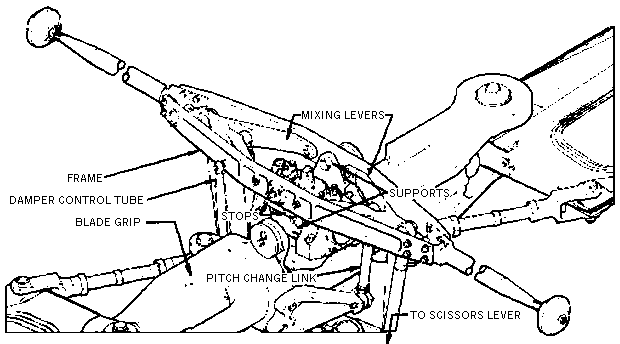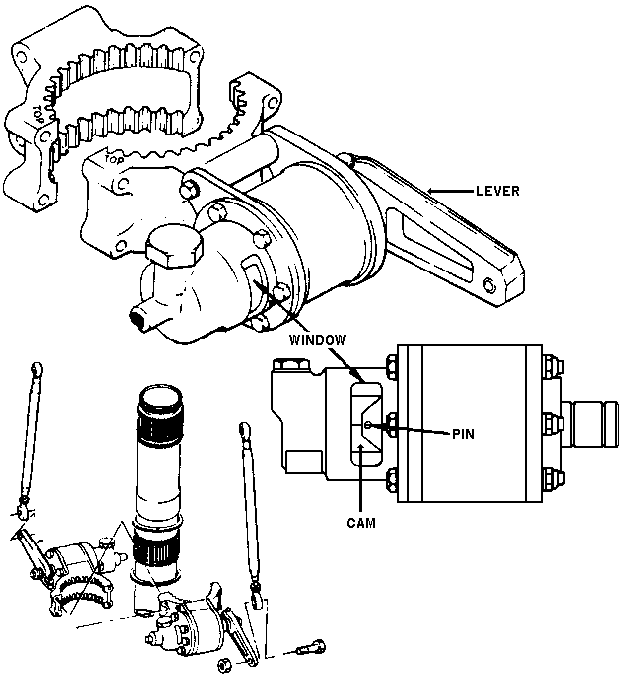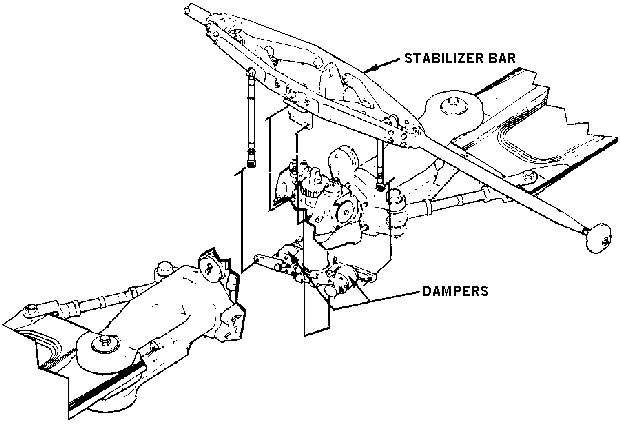 |

|
 |

|
The stabilizer bar is a weighted, rotating unit mounted above and across the main rotor suspended in pivotal bearings of supports bolted to the rotor hub trunnion. The supports also contain the stops that limit bar travel. Each side of the bar frame is connected through a control tube to a damper on the mast. Stabilizer bar mixing levers are connected into main rotor control linkage by control tubes from the scissor levers and by pitch change links connected to the pitch horns on the blade grips.

Two hydraulic (double acting, variable-rate, temperature-compensating, viscous) dampers are mounted on a pair of adapters which are attached on mast splines below the main rotor. The double acting lever is attached by a control tube to the stabilizer bar frame. As the bar is displaced during operation the cam displaces the pin. Movement of the pin and damper timing (5 ± 1 second ) determines stiffness (viscous) of action, therefore, the degree of stability the bar affords the helicopter. Damper rate and timing cannot be adjusted in the field but is factory preset for desired action. A window is provided through which fluid level and damper timing may be checked.

The stabilizer bar is connected into the flight system in such a manner that the inherent inertia and gyroscopic action are induced into the rotor system to provide a measure of stability for all flight conditions. If, while hovering, the helicopter's attitude is disturbed, the bar tends to remain in its present plane. The relative movement between the bar and the mast will cause the blades to feather and return the rotor to its original plane of rotation. When the rotor disc is displaced by cyclic action, initially a portion of the cyclic movement is removed, but because of pendulum action of the helicopter, the mast is displaced. Now, because of the restraining and damping action of the dampers, the bar possesses a mast-following characteristic. The time it requires the bar to follow the mast and return all the cyclic control to the rotor is determined by damper timing (5 ± 1 second). A compromise between gyroscopic action and damper timing is maintained during flight which allows the bar to provide a measure of stability, yet still affords the pilot complete control of the helicopter.

|
|
|
|
|
|
| Updated: 31 December 2008 | Born on 04 March 1999 |